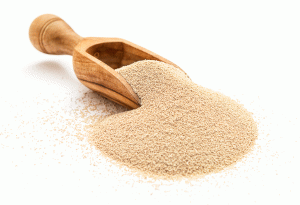Health and Wellness in Malaysia: A Shift in Consumer Priorities Post-Pandemic
Health and wellness remain a top priority for Malaysian consumers since the end of the pandemic however, the role of health and wellness, has evolved. During the pandemic, the focus was on physical health—specifically, maintaining immunity and fighting off illnesses. Consumers were particularly concerned with boosting their antibodies to protect themselves from potential viruses.
Today, however, the concept of health and wellness is taking on a more holistic approach. It now encompasses both physical and mental well-being, reflecting a broader understanding of what it means to live a healthy lifestyle. To better understand the changing needs of Malaysian consumers, we conducted a comprehensive study on health and wellness, with a focus on two key groups: young adults unmarried 20-30yo and mothers with young children.
What is the role of health and food diets in their lives?
Role of Health and Food diets:
As the pursuit of wellness becomes increasingly individualized, young adults in Malaysia are prioritizing their health from a personal perspective. To them, feeling good and having an energetic day to tackle work and pursue their passions is of utmost importance.
On the other hand, mothers with children would actively ensure they are taking preventative measures to stay free from illnesses and are able to take care of their families.
Across both groups, the ideal vision of health is a harmonious blend of a balanced diet, regular exercise, and a healthy lifestyle. But what exactly constitutes a “balanced diet” in the eyes of Malaysian consumers?
Balancing Act: Preventative and Enhancive Measures
For Malaysian consumers, a balanced diet encompasses both preventative and enhancive measures. On the preventative side, they aim to reduce the consumption of unhealthy foods and ingredients, such as excessive carbohydrates, sugar, oil, additives (colouring, preservatives), gluten, and MSG.
Conversely, the enhancive measures involve increasing the intake of fiber-rich fruits and vegetables, unprocessed whole foods, prebiotics, probiotics from natural sources, and complex carbohydrates like grains, nuts, and wheat.
Barriers to Achieving the Ideal scenario
While the above is their ideal scenario, certain barriers often prevent consumers from attaining their desired balanced diet. The local cuisine in Malaysia, for instance, heavily relies on staple ingredients that fall under the “preventative” category, such as plain rice, roti canai (a dish made from flour, eggs, and fat), grains, and nuts. These are readily available and affordable, making them a go-to choice for many households.
On the other hand, opting for healthier food alternatives can come at a premium price, putting them out of reach for some consumers.
Bread: A Healthy Carbohydrate Solution
In response to these challenges, Malaysian consumers have started to perceive bread as a healthier carbohydrate option. Bread offers a diverse range of formats, from loaves and flatbreads to convenient grab-and-go sizes, catering to the needs of both young adults and busy mothers.
Moreover, the variety of bread types, from white to whole-wheat and seeded varieties, as well as the versatility in preparation (sweet or savory) and pairing options, make bread a versatile and accessible choice. Bread is widely available in local convenience stores, supermarkets, and bakeries, making it a convenient staple for those on the go.
Importantly, bread is also perceived as a more affordable carbohydrate option compared to other healthier alternatives like quinoa or couscous, further contributing to its appeal among Malaysian consumers.
Embracing a Balanced Approach
As Malaysians navigate the evolving landscape of health and food diets, the role of bread as a healthy carbohydrate choice has become increasingly significant. By addressing the barriers to achieving a balanced diet and providing a versatile, accessible, and affordable option, bread has emerged as a valuable ally in the pursuit of overall wellness.
Moving forward, the continued evolution of health and food diets in Malaysia will likely involve a balanced approach, where consumers strive to incorporate both preventative and enhancive measures, while leveraging the advantages of versatile and convenient options like bread to support their health and wellness goals.ㅤ
Categories of breads:
Bread is categorised into 5 groups by Malaysian consumers–
- Breads with targeted benefits e.g natural ingredients, fortified with vitamins and minerals
- Breads with additional ingredients e.g wholewheat, wholegrain, multigrain,
- Breads that are artisanal and café style e.g sourdough, baguette, bagel, rye bread
- Common bread e.g white bread, flat bread, pita bread
- Sinful bread e.g butterscotch bread, flavoured bread (chocolate, banana, vanilla), buns with fillings
Breads with targeted benefits, additional ingredients and artisanal ingredients are the most sought after and are perceived as healthy breads, where else, common bread and sinful breads are least preferred.
How are healthy breads selected?
Healthy bread consumption criteria:
The top four considerations, when selecting healthy bread are – availability, nutritional benefits, sensory and the price. While price and availability are top considerations for both groups, younger adults tend to prioritise sensory over nutritional benefits as they prioritise appealing taste before benefits, mothers with kids on the other hand prioritise nutritional benefits over sensory, to cater to their children’s health needs and appeal to their taste buds.
Embracing the Healthy Bread Revolution:
As Malaysian consumers strive to maintain a balanced diet, regular exercise, and a healthy lifestyle, the bread industry has emerged as a key player in supporting their wellness goals. Breads with targeted benefits, additional ingredients, and artisanal qualities are the most sought-after options, as they are perceived to be the healthiest choices.
Moving forward, the bread industry has an opportunity to cater to the diverse needs of both young adults and mothers with children. For younger consumers, affordable, indulgent, and flavourful yet healthy bread options could be a game-changer. Meanwhile, mothers with children would appreciate tasty and nutritious bread choices that can appeal to their children’s taste buds while providing the necessary health benefits.
By understanding the evolving preferences and consumption criteria of Malaysian consumers, the bread industry can continue to innovate and offer products that seamlessly integrate into the pursuit of a balanced and healthy lifestyle. ㅤ




